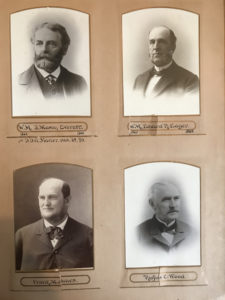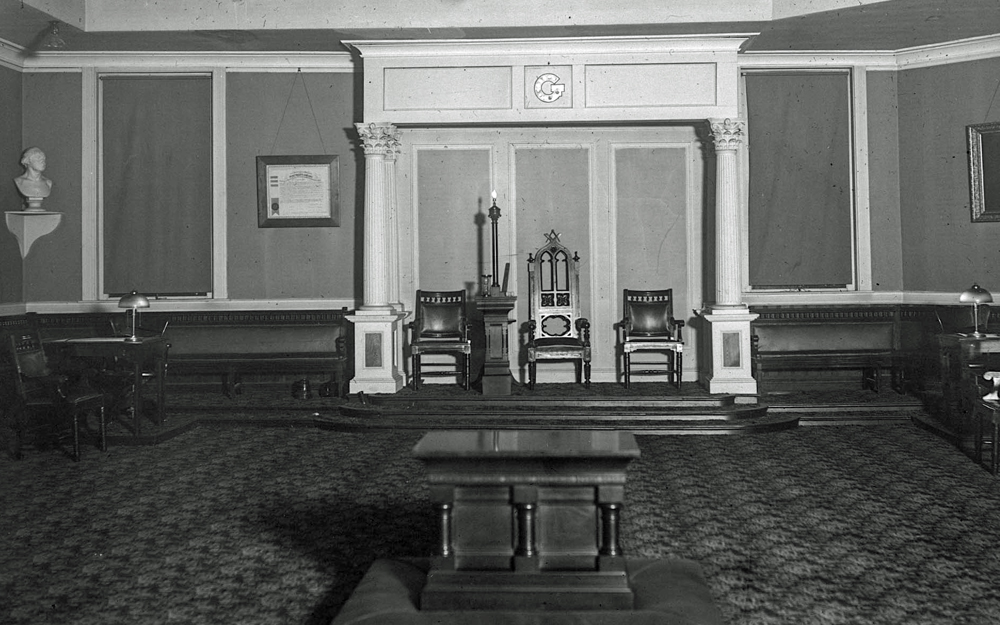True Tales from Canton’s Past: Blue Hill Masonic Lodge
By George T. ComeauOn the 10th day of March 1863, nine men were granted a dispensation to organize a Lodge of Free and Accepted Masons in Canton. These men, stalwarts of the community, began to assemble a membership with a history and lineage that connects through Stoughton to Most Worshipful Paul Revere and Bro. Richard Gridley.
To trace the history of what would become the Blue Hill Lodge, we look to the earlier history of the Rising Star Lodge in neighboring Stoughton. It was Canton’s own Richard Gridley — then known as an “Artificer in Metals” and the founder of the Army Corps of Engineers — who sponsored Paul Revere and eventually Revere would become the Grand Master of Masons in Massachusetts. Freemasonry is the world’s oldest and largest fraternity. It is composed of adult men of good character from every country, religion, race, age, income, education, and opinion. It is based on a body of knowledge and system of ethics connected to the core belief that each man has a responsibility to improve himself while being devoted to his family, his faith, his country, and his fraternity.
Prior to the founding of the Rising Star Lodge in Stoughton, men would have to travel 20 miles by horseback, in the light of the full moon, to attend the lodge in Boston. In March 1799, the men of Stoughton and Canton signed a petition to organize a lodge of their own. The Grand Lodge was concerned, however, that drawing members from the Boston Lodge would weaken their membership and the older lodges would not be able to survive. By the end of the same year the Grand Lodge reconsidered the request, likely after much “politicking” with Revere, and a warrant was issued allowing the creation of the Rising Star Lodge in Stoughton.
In those early days of the fraternity, the men would meet on the “Thursday evening preceding the full of the moon.” There is tradition, ritual, mysticism, spirituality, and brotherhood embodied in the organization. This has been true for centuries and was certainly true in the early 1800s as the Stoughton lodge grew. And, as the lodge grew, the need for meeting spaces posed challenges.
In 1810 the lodge was moved to Canton to Amos Upham’s tavern on what is now Washington Street at Canton Corner. Upham was a Mason and the tavern was located within what was once a large mansion. On the north side of the building was a large hall, and for four years the Rising Star Lodge met in what were called sodality meetings. In time, the Masons met at Cobb’s Tavern — just over the line between Canton, Stoughton and Sharon. Eventually they settled at Capen’s Tavern in Stoughton Center, where they gathered until 1859.
By the middle of the Civil War, the men of Canton who were part of the Rising Star Lodge began the process of creating their own lodge. It has always been considered that Rising Star was the parent of what would become the Blue Hill Lodge. In fact, Reverend Benjamin Huntoon was a moving force in the creation of the new lodge and in 1849 he had served as the 23rd Worshipful Master. The Worshipful Master sits in the East of the lodge room, chairs all of the business of his lodge, and is vested with considerable powers without further reference to the members. He also presides over ritual and ceremonies. In short, it is the highest honor a man can achieve within a lodge.

Hundreds upon hundreds of photos of every Blue Hill Lodge member are stored in enormous books, a record that began in 1897.
There may have been considerable consternation over the fact that Huntoon was leaving the Stoughton lodge to become part of the newly established Canton lodge. No Mason could be a member of two lodges, forcing Huntoon to make a choice. Huntoon was the spiritual leader of the community in Canton, and his move to a new lodge would be a signal to the Canton men to leave as well. More likely was the fact that Huntoon was in the twilight of his life and in ill health. He died within a year, shortly after the newly formed lodge received its constitution in 1864.
The Blue Hill Lodge flourished. Supported by the management and leadership of the Kinsley Iron Works, they made their home on Revere Street. Soon they took up space at the Massapoag House, where the present-day post office stands. The meetings were always tied to cycles of the full moon and great reverence was given to the lunar calendar. Within six years the Masons found themselves on Church Street in a new space on the second floor of the building across from the Baptist Church.
It’s still standing today, the Amory — an imposing building that was built in 1837 as a schoolhouse. The building was expanded as a storehouse for the militia when the Gridley School was opened in 1854. And in 1867 the Masons moved in. Still, to this day, there are Masonic symbols on the second floor that bisect bedrooms that were built when the structure was converted into a residential use. In 1881, the lodge moved to a spacious hall on the corner of Washington and Bolivar streets in a building specifically named Masonic Hall. In reality, this was a rental space, but enormous by any previous measure.
The Blue Hill Lodge long coveted an entire building to call home. In 1930 the Masons began negotiations to purchase the Baptist Church on Church Street. Negotiations broke down, and yet in 1937 a far more reasonable price was offered and accepted. At last, the Blue Hill Lodge had their very own home. The second floor was furnished lavishly. Gorgeous wooden furniture, deep carpets and colorful adornment transformed the space. At the height, almost 300 Masons were members of the lodge in Canton.
Over the years, as members grew older and society shifted, the membership of the Blue Hill Lodge declined. Older members found the climb to the second-floor temple increasingly difficult. Earlier this year, the leadership decided to sell the venerable hall, and today it is again a Baptist Church. Blue Hill Lodge still exists, but it is sharing space with the Rising Star Lodge in Stoughton. The child has come back to the mother.
On the second to last day that the Masons owned the hall, myself and fellow Historical Society curator Jim Roache were invited in to assist by taking items on long-term loan and placing them in a safe archival environment at the society headquarters. Our jaws dropped as history exploded from the safe at the back of the building. Three enormous volumes of photographs, representing close to 800 men from Canton, were presented to us for safekeeping. The volumes of photos represent a project that began in 1897 through the work of Winthrop Leonard. Meant to document every single Mason who was alive or dead, the work took years, and the trail spanned the entire continent. What these photos represent are the men who were rich and poor, wealthy in spirit and family, and shared the bond of a brotherhood inked for centuries in ancient rites. These images of men unlocked a history of the town of Canton that was long rumored, but never seen. Today, they are an indispensable tool for amplifying the growth and success of the community.
At some point the Blue Hill Lodge will return to Canton, and when they do, six boxes of records, hundreds of photographs and their historical record awaits. Until that time, scholars and the public will be able to see what had been long held close. For this is an organization that has moved beyond secrecy and assumed the role of a mature and generous fraternity that values high morals and generosity of time and talent.
Short URL: https://www.thecantoncitizen.com/?p=40705











